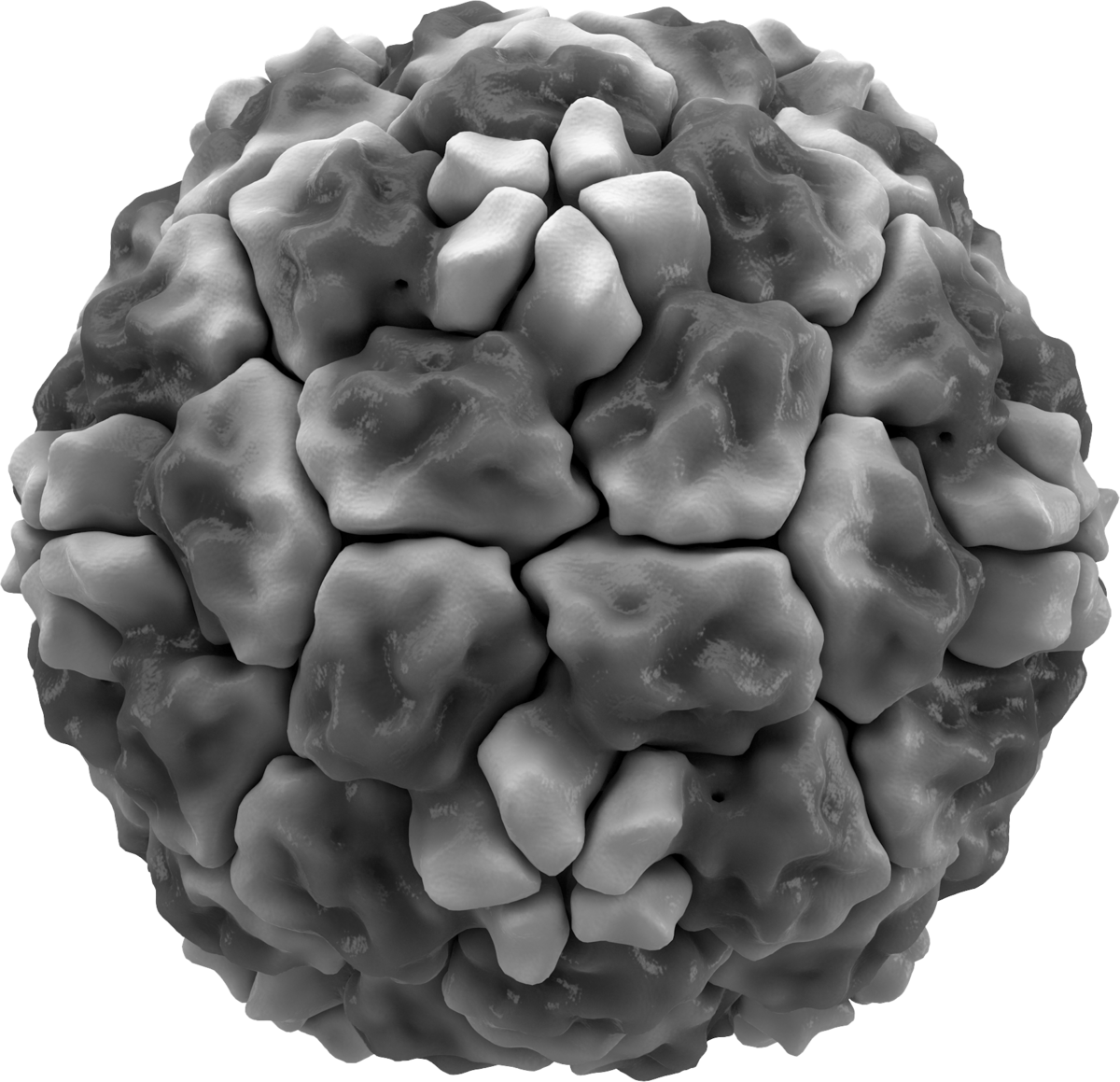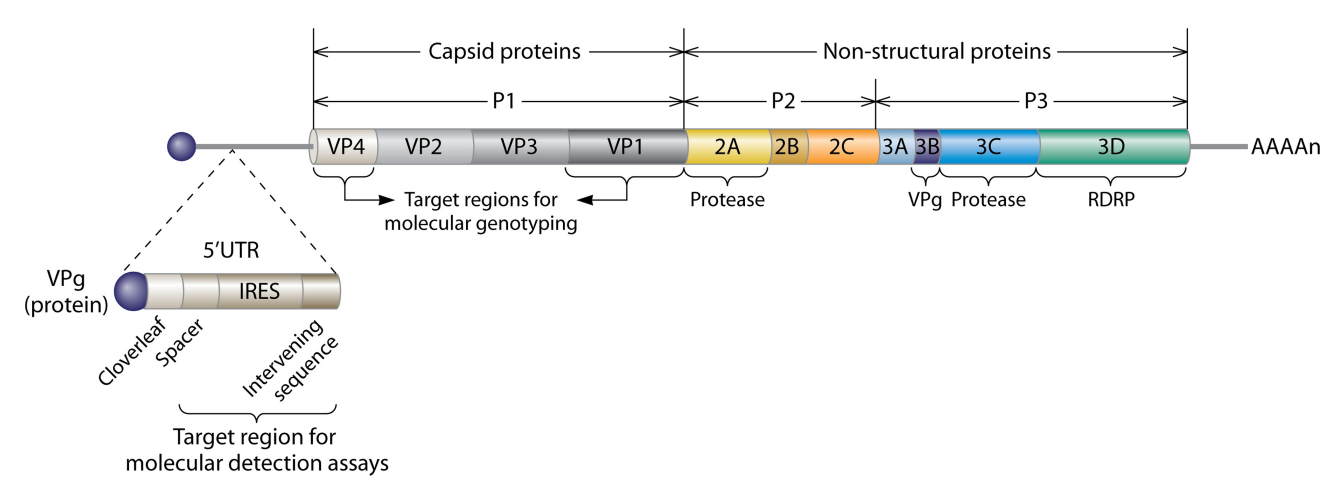Rhinovirus Summary

Rhinovirus (RV) is a single-stranded, positive-sense RNA virus belonging to the family Picornavirus, genus Enterovirus. The RNA genome is approximately 7.2 kb in length and is surrounded by an icosahedral protein capsid containing 60 structural proteins, surface-exposed VP1, VP2, VP3, and buried VP4. Human is the only host for RV, which is divided into “major” and “minor” groups according to whether the receptor for entering the host cell is intercellular adhesion molecule-1 (ICAM-1) or low-density lipoprotein receptor (LDLR) . Initially, RVs were divided into two groups based on the activity of antiviral drug combinations. Later, RVs were divided into two species (RVA and RVB) by analysis of viral sequences. The development of clinical molecular detection technology enabled the discovery of RVC, which cannot be cultured in vitro. The receptor used by RVC is the cadherin-related family member 3 receptor (CDHR-3).
RV is responsible for half to two-thirds of common colds and half of the exacerbations of asthma. In recent years, it has been reported that RV infection can also cause croup, bronchiolitis, community-acquired pneumonia, and other lower respiratory tract infections and aggravation of chronic lung diseases. RV takes a high economic toll when combining the costs of medical treatment, delayed education, work absenteeism, and missed economic and social development.

The most remarkable feature of RV is that it has a very large number of serotypes or types. Based on previous serological studies and molecular typing criteria based on VP1 and VP4/2 p-distance, RVA has 81 types, RVB has 33 types, and RVC has 60 types. This diversity has impeded drug discovery against RVs. The discovery of vaccines against RV has faced similar challenges, and after many attempts, no protective vaccine has been approved, although several are in development. which mainly due to the 174 types of RV, the vaccine is difficult to generate cross-serotype immunity. At the same time, it also poses a challenge to the archiving, management, annotation, and accurate typing of RV data.
Genomic Organization

The viral genome consists of a
single gene whose translated protein is cleaved by virally encoded
proteases to produce 11 proteins. Four proteins, VP1,
VP2, VP3, and VP4, make up the viral capsid that encases the RNA
genome, while the remaining nonstructural proteins are involved
in viral genome replication and assembly. The VP1, VP2, and VP3
proteins account for the virus’ antigenic diversity, while VP4 anchors the RNA core to
the capsid. There are 60 copies each of the
four capsid proteins, giving the virion an icosahedral structure,
with a canyon in VP1 that serves as the site of attachment to cell
surface receptors. More than 90% of known HRV serotypes, the
“major group,” utilize the cell surface receptor intercellular adhesion molecule 1
(ICAM-1), while the “minor group” attaches to
and enters cells via the low-density lipoprotein receptor (LDLR).
Some of the major-group HRVs also use heparan sulfate as an
additional receptor.
reference: Human
Rhinoviruses
